How to Turn Frozen Fish into Delicious Dinners
Transform the frozen fish you've stored away into a satisfying seafood meals.
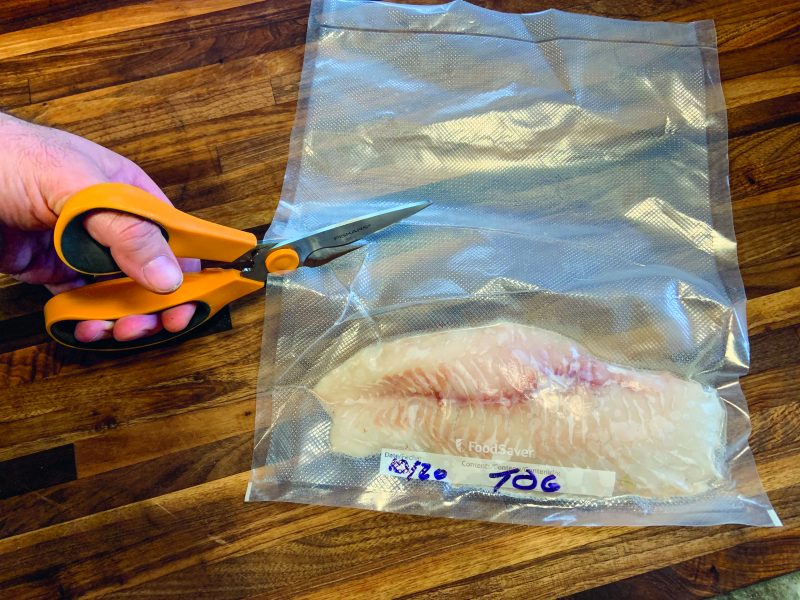
With the new fishing season knocking on the door, I recently conducted an inventory of my frozen fish cache, and I decided it was time for some serious spring cleaning.
Throughout the winter, I managed to put a good dent in my frozen fish supply, but two packages of yellowfin tuna scraps, two bags of tautog/sea bass fillets, and three small packages of blue crab meat had somehow survived.
(Note: On The Water is reader-supported. When you buy through links on our site, we may earn an affiliate commission.)
Generally, I try to avoid freezing fish for more than six months. Even if carefully vacuum sealed, I think the taste and texture rapidly decline after that amount of time.
A quality vacuum-sealer will extend the life of your frozen fish, and there are two types worth investigating: external suction vacuum-sealers and chamber vacuum sealers.
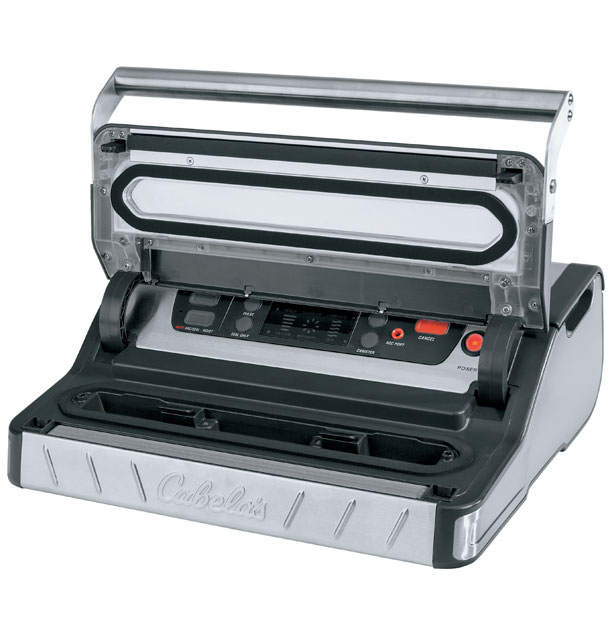
For the purpose of keeping fresh fish though, a basic external suction vacuum sealer like Cabela’s Deluxe 12” Vacuum Sealer will suffice.

Despite owning a vacuum sealer, I have become somewhat of a frozen fish snob; if it survives in my freezer the past six months, the odds of me actually eating it diminish substantially. So, March has officially become the month of reckoning for any fish in my freezer. It’s now or never, so out with the old, in with the new!
Fresh fish is ideal for simple preparations that highlight the true flavor of the fish. With frozen fish, I prefer to bedazzle it with bold and/or spicy flavors that will mask any “off” flavors.
Our first recipe is a variation of Mark Bittman’s salmon croquette recipe from his cookbook, the simply titled Fish. Bittman, a former food columnist for the New York Times, is a renowned authority on all things seafood. This recipe is a true testament to his fish-cooking prowess.
I recently made it with 5-month-old frozen fish (tautog) and it came out great. Don’t let the fancy French term “croquettes” intimidate you because they are just a variation of simple fish I recently made it with 5-month-old frozen tautog and it came out great. Don’t let the fancy French term “croquettes” intimidate you because they are just a variation of simple fish.
Recipe: Fish Croquettes
(Serves 4)

- 1 1/2 cups steamed fish
- 1 1/2 cups mashed potatoes
- 4 medium potatoes, partially peeled
- 3 tablespoons butter
- 1/3 cup milk
- 1/2 cup onion, minced (or chopped scallions)
- 1/4 cup fresh parsley, minced
- 1 teaspoon garlic, minced
- Two eggs, beaten
- 1 teaspoon Dijon mustard
- Salt & pepper to taste
- Unseasoned breadcrumbs
- 1/2 cup olive oil
- Lemon wedges
Cut the potatoes into 1-inch cubes and boil in salted water for 12 minutes. Drain, mash them up, add butter and milk. Stir in the minced onion (or scallions), parsley, garlic, eggs, mustard, then season with salt and pepper to taste.
Next, salt the thawed fish and steam it using water that has been spiked with a few lemon wedges. Steam for about 6 minutes until it registers at least 140 degrees. Crumble up the fish and carefully fold it into the potato mixture. Do not overwork it – you want to leave some decent-sized chunks.
Next, stir in some breadcrumbs until the fish/potato mixture is firm enough to handle. Place about a cup of breadcrumbs on a plate. Form enough mixture into a ball about the size of a lime, and then press each side into the breadcrumbs, forming a patty, making sure it is completely coated. Repeat with the remaining mixture.
Line a tray with a thin layer of breadcrumbs and place the patties on them. Sprinkle some more breadcrumbs on top and refrigerate for about 45 minutes. (Once the quettes have chilled, it will be much easier to shape them.) Press them down until they are about an inch thick and round them out. Return to refrigerator until ready to cook.
Preheat a large cast-iron skillet on medium heat until the handle is hot to the touch, about 8 minutes. (If using a non-stick pan, preheat for 3 minutes.) Add the oil and let it heat up until it starts to shimmer. Carefully add the croquettes, and fry on both sides until golden brown. (You will need to spin and rotate them as they cook to get even browning.)
Garnish with a tad of fresh parsley and sprinkle with Kosher salt. Serve with hot sauce, lemon wedges, and a dipping sauce of your choice.
Recipe: Thai Fish Curry
(serves 4)
- 1 ½ pounds fish of your choice
- 1/2 cup fresh mushrooms, sliced
- 1 cup green beans, chopped
- 1 tomato, chopped
- Lime wedges
- Fresh cilantro, diced
- 2 cups cooked Jasmine rice
Curry Sauce
- 1/2 cup fresh cilantro, chopped
- 1 13.5 ounce can coconut milk
- 3 green onions, chopped
- 2 tablespoons ginger, chopped
- 4 cloves garlic
- 2 to 3 tablespoons fish sauce
- 1 tablespoon chili powder
- 2 teaspoons ground cumin
- 2 teaspoons ground coriander
- 2 teaspoons brown sugar
- 1 teaspoon turmeric
- 1 fresh red chile, chopped
Place all of the curry sauce ingredients in a food processor (or blender). Process well to form a sauce, then pour it into a large frying pan. Cook on medium heat and bring to a gentle boil, then stir in the mushrooms and green beans. Cover and simmer for 8 to 10 minutes or until the vegetables start to soften.
Next add the fish and tomato. Continue simmering until fish begins just begins to flake, then grab a spoon and give it a taste. Add more fish sauce if it’s not salty enough; add more sugar if it’s too sour.
Place 1/2 cup of rice into each bowl, then top it off with piping-hot fish curry. Garnish with chopped cilantro and lime wedges. You will be delighted with bold, earthy, spicy flavors.
The other night, my wife decided to use some of my frozen crab meat to make crab-stuffed ravioli. They were fantastic. Making homemade pasta is a labor of love, but the results are well worth the effort.
Recipe: Crab & Prosciutto Ravioli
(Makes about 3 dozen ravioli)
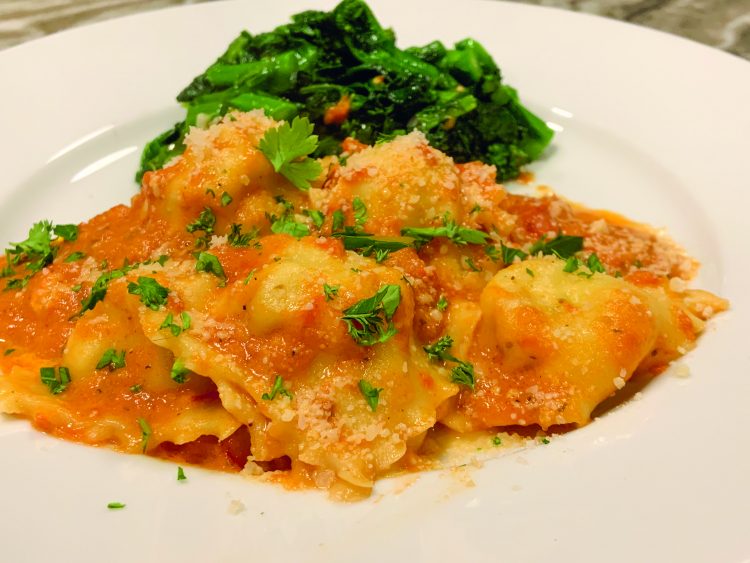
Dough
- 3 cups all-purpose white flour
- 1⁄2 teaspoon salt
- 2 eggs
- 1⁄2 cup water
Filling
- 4 ounces crab meat
- 2 ounces prosciutto, diced
- 1 cup ricotta cheese
- 2 tablespoons Parmesan cheese
- 1 teaspoon fresh chives, minced
- Zest from 1/2 lemon
- Pinch of red pepper flakes
- 1 teaspoon salt
- Fresh parsley, diced, for garnish
Sauce
- 2 cups marinara sauce
- 1/2 cup light cream
- 1/3 cup dry white wine
For the dough: Whisk flour and salt together, then place it on a board, making a depression in the center. Drop eggs into the flour and use a fork to break the yolks and briefly beat them.
Gradually combine the eggs and flour together, and slowly add the warm water to make a stiff dough. Knead the dough well, until smooth, then cover and let rest for 20 minutes. Cut dough into six equal pieces. Roll each piece into a very thin sheet about 1/16 to 1/8 inch thick. (Or run it through a pasta press, starting at the thickest setting, and then gradually bringing it down to the second-to-last setting.)
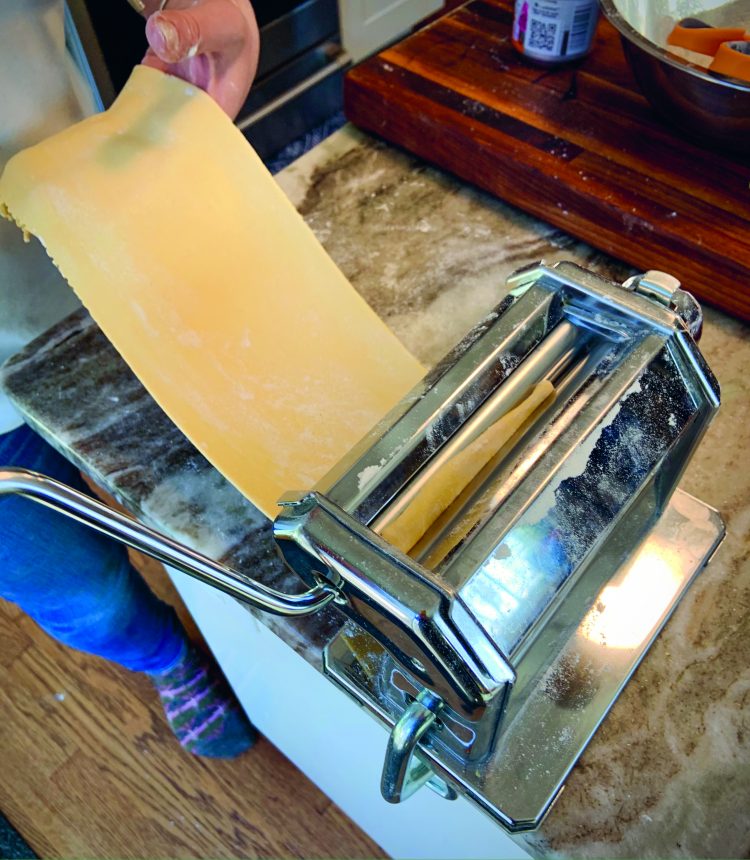
Place a sheet of dough onto a ravioli press and push the template into it to make indentations. Plop about a teaspoon of filling into each depression, top it off with another sheet of dough, and use a rolling pin to seal the edges. Invert the ravioli press over a flour-coated baking pan and push the ravioli out. Cover with a towel and let rest for at least an hour. Meanwhile, mix marinara sauce, light cream, and white wine together in a pan, heat up, then set aside.
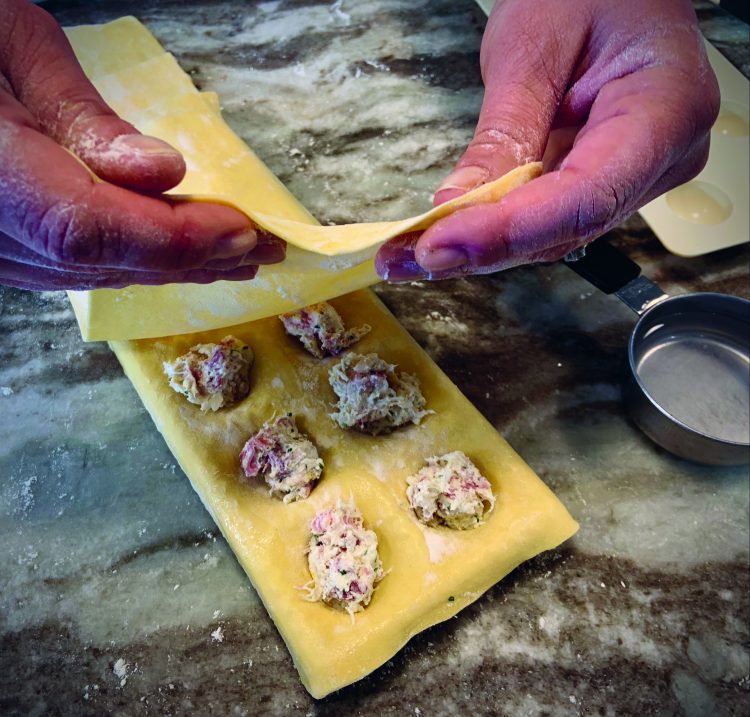
Bring a large pot of salted water to a slow boil. Boil your ravioli for about five minutes, then drain. Plate them and cover them with the sauce. Garnish with a bit of Parmesan cheese and some fresh diced parsley. To die for!
Recipe: Cape Cod Reuben
(Serves 2)
Our final recipe comes from OTW reader Mark England. He recently sent me a kind email about my January column on mastering pan-fried fish. After reading it, he purchased an electric skillet and a pair of Dexter fish spatulas. For his first attempt, he masterfully fried up some cod fillets and constructed a “Cape Cod Rueben” sandwich. Mark says he learned about this fine creation from Captain Parker’s Restaurant in Yarmouth, MA.
Hands down, a classic Reuben is my favorite sandwich of all time, so I think Mark’s idea is brilliant! I recently gave it a go with the last remnants of tautog fillets that were lurking in the chest freezer. It was outstanding!
- 2 fish fillets, pan-fried
- Coleslaw
- 4 slices marbled rye bread
- 4 slices Swiss cheese
- Russian dressing
- Butter
Pan-fry the fillets and sprinkle with salt. Place a layer of cheese on a slice of bread, then add the fish. Top the fish with coleslaw and a liberal amount of Russian dressing. Add another slice of cheese on top and cover with the second slice of bread. Butter both sides of the bread and place the sandwiches in a large skillet on medium-low heat. Cook both sides until nicely toasted and the cheese melts. Cut in half and serve with potato chips or fries. Magnificent!
Related Recipes
5 on “How to Turn Frozen Fish into Delicious Dinners”
-
Gate Jerron You are a true man of the belly!
Thanks for your great tips! -
Sean Dickerson You’re always looking out for the working man – with your – live off the land tips to put meat in the pot. You’re a real workin-mans-hero Andy nabreski
-
Tom Back in the days of catching 40-50 cod on the Helen H II I found that folding the filet in half placing them on a cookie sheet and freezing them over night then into the vacuum bag kept the fish tasting better longer because the sealer didn’t suck the juice out. Still do it when we buy it in the supermarket.
-
Bob Nightingale An excellent way to remove the off flavors on frozen fish is to put the defrosted fish in a pan of milk. Just cover the fish for 20 minutes. this will greatly improve the flavor of the fish.
-
rk For those who want ravioli without having to make the dough, won ton wrappers are pre sized and easy to use.
Leave a Reply